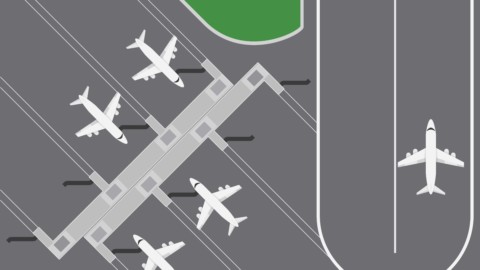There’s no doubt Google Maps is good for travel directions, but what if your organisation could also use online mapping tools to quickly assess where new infrastructure is required, or where existing infrastructure could be improved?

A member of the East Gippsland Water team using TechnologyOne’s spatial capabilities to pinpoint pipes.
What if you could use a map to quickly identify suburbs where service standards are falling, before customers complain? What if your maintenance teams could plan their routes to save travel time?
Until now, this spatial data – the geographical coordinates of roads, offices, transport networks, and utility assets – has been stored within complex geographic information systems (GIS) accessible only to mapping experts.
This is all changing, now that mapping technology is being built into back office systems. This will alter the way managers make decisions and how customers interact with organisations.
Saving time
Instead of relying solely on spreadsheets and charts, managers will be able to look at data on a map, allowing them to quickly spot trends and prioritise resources. Councils can already do this to see roads with reported defects, for example.
This approach will transform how maintenance is managed. For example, TechnologyOne’s spatial platform can pinpoint the location of a faulty office air-conditioner, including its floor and exact position, on a map.
The map icon also links to the unit’s technical details and maintenance history, allowing repair teams to access a full suite of information about the air-conditioner.
The technology has a wide range of applications; from water and stormwater to roads and works planning.
It allows asset owners to visually manage their networks and gain a clearer picture of the impact of work being performed on the services.
With this platform, assets can be managed spatially in the field, and crews can accurately assess the impact of taking actions across a network – such as turning off a valve in a water network or changing the sequence of traffic lights on a particular road.
Put simply, this technology allows users to better utilise asset data.
Technology in action
East Gippsland Water in Victoria is using TechnologyOne’s spatial capabilities to help workers pinpoint pipes. By performing a network trace on a tablet device, they can immediately see which homes or businesses would be affected by a disruption to the water supply during repairs.
This allows workers to avoid potentially disastrous mistakes, and they don’t need to wait for someone at the office to perform these checks. This capability could be extended to the management of roads and stormwater drains in the future.
This network trace function previously wasn’t linked to property details, aerial photography, or other business data – nor was it accessible on mobile devices via the cloud.
Customers, too, will benefit from these changes. Just as they can search a retail website for the nearest store, they can use online maps to interact with an organisation. For example, local governments can allow people wishing to build or renovate to see the required planning permits for each location.
Asset owners can also use this spatial capability to monitor on a map what customers are saying via social media – making it easy to spot growing demand for infrastructure, such as a new business precinct, or a new public transport route, for example.
Only the beginning
The opportunity to transform business management increases as spatial data becomes more accessible. Governments are opening up their spatial data for use by third parties, while mapping initiatives are adding to the amount of available spatial data.
Greater use of sensors to connect everything from offices, cars, and parking meters to the Internet of Things will also result in a flood of new spatial data.
Businesses that don’t take advantage of this data will be at a disadvantage. A great way to prepare for the future is to integrate back-office systems with spatial data, or adopt an enterprise software system that already includes this capability.
This partner content is bought to you by Technology One. For more information, visit www.technologyonecorp.com/products/spatial.















